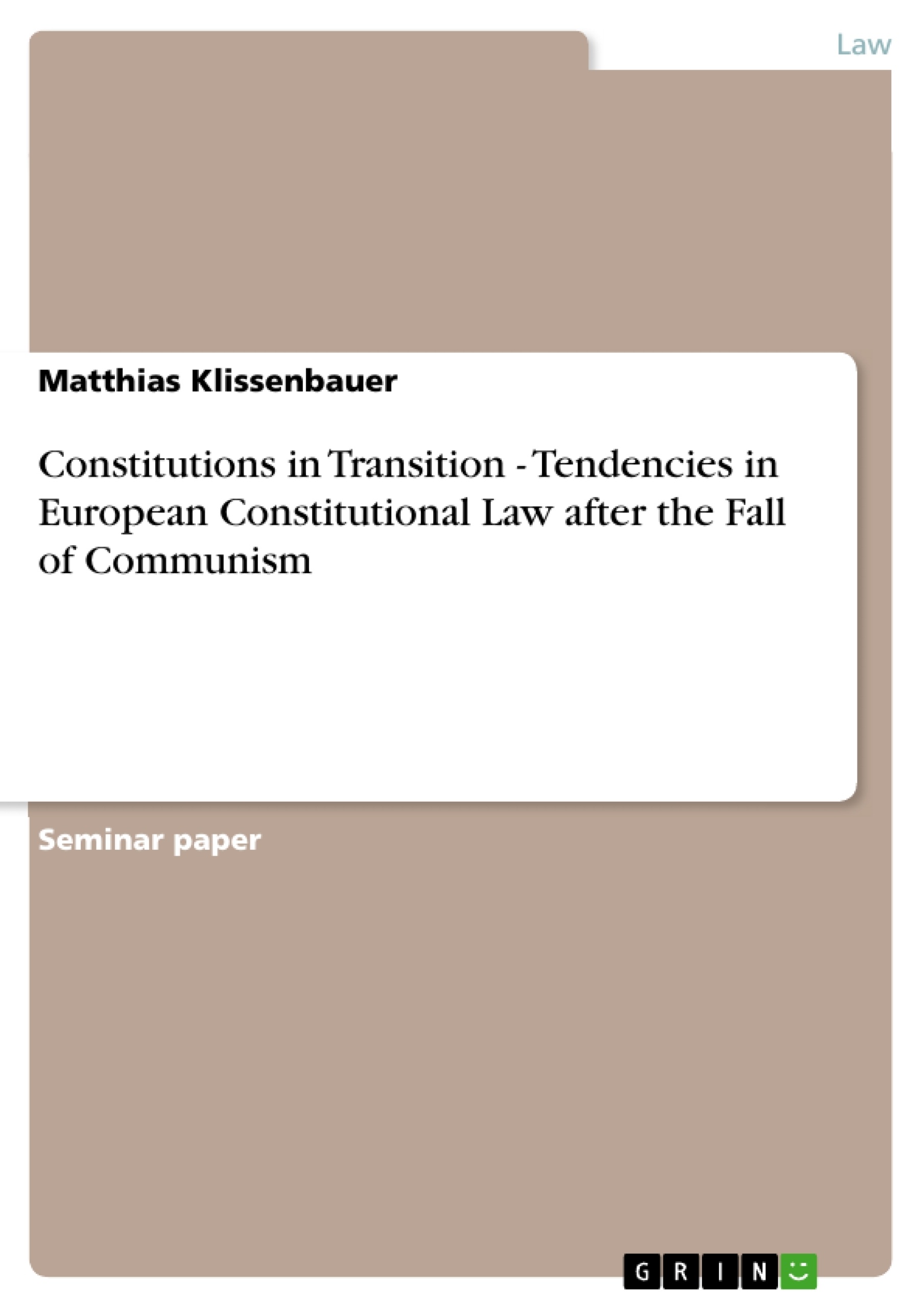Soon after the historical changes that took place in Central and Eastern Europe in 1989, it became clear that any new political, social, cultural and economical system introduced after the fall of communism had to be based on a constitutional system of western type. As it will be pointed later, this does not necessarily mean, that basic ideas and concepts of constitutions like those existing in western Europe were completely unknown in the CEE-countries in communist times. However, the need to find a kind of legal framework to prevent drawbacks on the way to democracy and market-orientated economy as well as the demonstration of the new orientation towards the west made significant changes of the constitutional system even more important. From the very beginning there were two sides to the constitutional aspect of transitions. On the one hand, national problems had to be solved. On the other hand, an international political pressure could be observed, e.g. concerning the protection of human rights. The search for a new legal system was a walk on a fine line between principles and compromises on both internal and international level.
Inhaltsverzeichnis (Table of Contents)
- Introduction
- Stalinist-shaped Constitutions in CEE-countries before 1989
- Pragmatism
- Legal System
- Situation of Individuals and their Rights
- Transition in Poland
- The 84Roundtable Agreements94
- The 84December Amendments94
- The 84Small Constitution94
- The Constitution of 1997
Zielsetzung und Themenschwerpunkte (Objectives and Key Themes)
This paper examines the transition of constitutions in Central and Eastern European (CEE) countries after the fall of communism, focusing specifically on Poland's constitutional journey. The author aims to highlight the challenges and successes of creating new legal frameworks that promote democracy and market-oriented economies while simultaneously safeguarding human rights.
- The legacy of Stalinist-shaped constitutions in CEE countries before 1989.
- The complexities of transitioning to a Western-style constitutional system.
- The role of international political pressure in shaping constitutional change.
- The evolution of Poland's constitution, from the 84Roundtable Agreements94 to the final 1997 Constitution.
- The influence of the German and French constitutional models on Poland's system.
Zusammenfassung der Kapitel (Chapter Summaries)
The introduction establishes the context for the paper, highlighting the need for new constitutional frameworks in CEE countries after the fall of communism. It emphasizes the dual nature of the transition, encompassing both national challenges and international pressures, particularly regarding human rights protection.
The second chapter delves into the characteristics of Stalinist-shaped constitutions prevalent in CEE countries prior to 1989. It explores the concept of "Pragmatism," where the constitution had minimal binding effect on public institutions and the Communist Party retained control over strategic positions. The chapter also discusses the limitations on individual rights and the minimal role of constitutional courts in the communist system.
The third chapter focuses on the transition in Poland, examining the various approaches considered for dealing with the legacy of the communist constitution. It traces the evolution of Poland's constitutional framework, from the 84Roundtable Agreements94 and the 84December Amendments94 to the 84Small Constitution94 and the final 1997 Constitution. The chapter also discusses the roles played by key figures like President Walesa and the Sejm.
Schlüsselwörter (Keywords)
The main keywords of this paper include: constitutional transition, CEE countries, post-communism, human rights, democracy, market-oriented economy, Stalinist-shaped constitutions, pragmatism, Poland, 84Roundtable Agreements94, 84December Amendments94, 84Small Constitution94, 1997 Constitution, German model, French model, Rechtsstaat, Constitutional Court, checks-and-balances.
- Quote paper
- Matthias Klissenbauer (Author), 2000, Constitutions in Transition - Tendencies in European Constitutional Law after the Fall of Communism, Munich, GRIN Verlag, https://www.grin.com/document/2240



